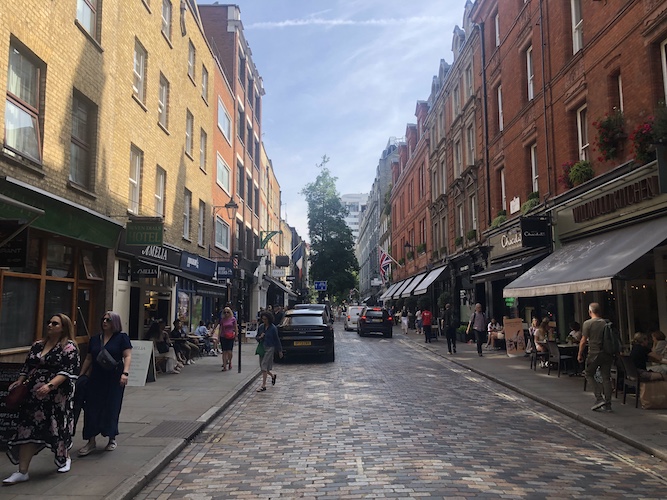Sir Sadiq Khan made headlines last week for crediting London’s “open, liberal and diverse” culture for a “major surge” in American tourism – a tribute to “London’s values” making the city increasingly attractive.
Certainly, our American cousins – literally in my family’s case, with a trip booked for Christmas – seem keen to sample the city which this year won Tripadvisor’s top world destination accolade. US visitor numbers were up last year by eight per cent, helping to make London the third most visited city in the world with almost 21 million international visits in 2024.
That alone might disappoint London’s increasingly histrionic haters, across the Atlantic as well as at home. But there’s more. The latest City Hall analysis of visitor accommodation trends in 2024 shows that overall demand for somewhere to stay in the city is now back above pre-pandemic levels – with the recovery driven “entirely by growth in domestic demand”.
It’s a welcome statistic. The city break to London is definitely back. Compared to 2019, the number of nights spent in the capital by people from elswhere in the country has actually risen by a third, to 37 million, boosting London’s total number of visitor nights from around 146 million pre-pandemic to 154 million last year. Plenty of Brits are clearly not convinced by all he “crime-ridden hellhole” rhetoric.
The other side of the coin though is a decline, albeit slight, in the overall number of international visitor nights, from 118 million to 117 million. It’s a picture matched in wider statistics: one of overseas tourists returning, but not yet to 2019 levels, except for those Americans, with Europe close behind. China’s share, along with that of the rest of the world beyond Europe and north America, remains significantly down on its pre-pandemic peak.
Domestic visitors’ £5 billion annual spend last year is more than welcome. But overseas visitor spend, already at £17.3 billion in the capital, underlines how important the wider tourism sector is for the city. London is in a continuing competition with other “world cities” for this lucrative business too. Pushing those numbers back up to 2019 levels and beyond means not only supporting and extending the city’s range of attractions – Ted Lasso location hunting in Richmond, for example – but also ensuring enough rooms are available.
Interestingly, while visitors are getting keener on short-term “unserviced” rentals, the figures show the amount of Airbnb and similar accommodation actually “shrinking rapidly” as regulations get tighter, the City Hall analysis says. Good news for those like Westminster Council leader Adam Hug, who has warned of short-term letting hitting much-needed long-term rental supply in his borough.
It’s the hotel sector which is dominant, and that’s where plan makers and policy makers are focusing their attention, with Khan’s Towards a new London Plan document, the first stage in preparing his next planning and development blueprint for the capital, now acknowledging that boosting “purpose-built visitor accommodation” is essential for supporting tourism.
That’s already happening, according to City Hall’s inward investment and tourism agency London & Partners, including in the more affordable bracket as well as the higher end. One of the capital’s largest budget hotels, a 693-room Premier Inn, is now under construction in a prime spot just off Trafalgar Square.
The historic commercial heart of the city could be a new hotel hub too, with the City of London Corporation now seeking to reimagine the Square Mile as a “vibrant” seven day a week and evening destination. Its new Local Plan envisages 4,000 more hotel rooms by 2037, including as an option for safeguarding historic buildings. The early 19th Century Grade 1 listed Custom House, on the Thames near the Tower of London, is a case in point, now to be repurposed as a 179-room hotel with opened up public access to the riverbank.
But hotels should also be encouraged more widely in the next London Plan, Khan says, both to help “spread the benefits of tourism across London and revitalise commercial areas”. Wherever you live, more hotels could be coming your way.
While that’s a medium to long-term ambition, London retailers will be watching next month’s budget closely to see if their plea for short-term help, reinstating VAT-free shopping for international visitors, has been heeded. The scheme, previously applying to non-EU residents, which the government ended after Brexit, has cost West End retailers nearly £1.4 billion in sales since the beginning of 2023 alone, with tourist shoppers taking their spending to Paris or Milan instead, according to central London businesses.
And City Hall continues to press the case for a tourism levy, to “raise vital funds, improve services for residents and strengthen London’s global appeal”, according to London Assembly oversight committee chair Bassam Mahfouz. Such a levy could raise up to £240 million a year for the city, a new assembly report says.
Follow Charles Wright on Bluesky.
OnLondon.co.uk provides unique coverage of the capital’s politics, development and culture with no paywall and no ads. Nearly all its income comes from individual supporters. For £5 a month or £50 a year they receive in-depth newsletters and London event offers. Pay via any Support link on the website or by becoming a paying subscriber to publisher and editor Dave Hill’s Substack.

